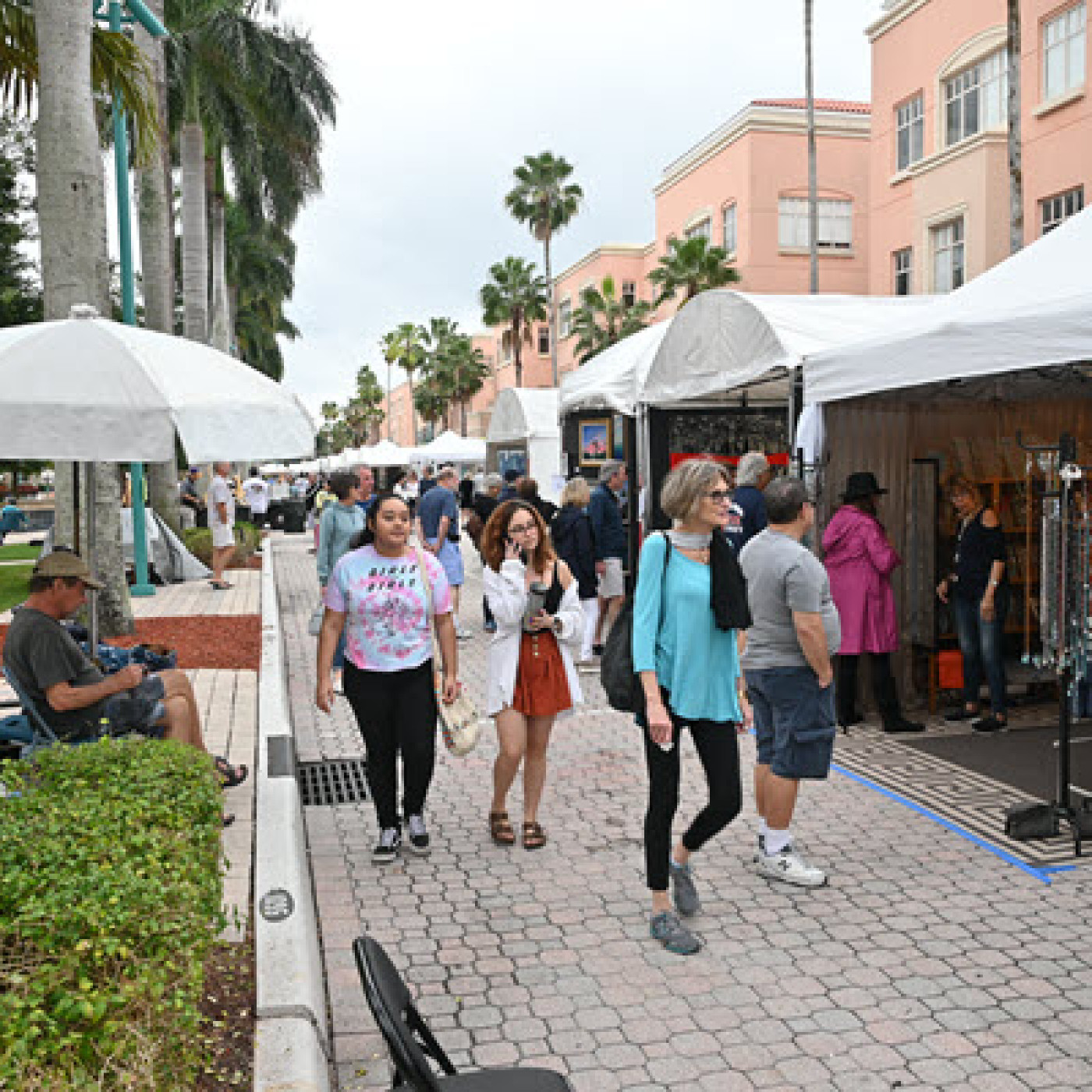A Focus on High-Quality Art

Photo courtesy of Boca Raton Museum of Art
How to Run a Balanced Event
The longest running art festival in Boca Raton, Florida, is celebrating its 35th event in February and ready to welcome artists and attendees back.
With last year’s art fair canceled due to the COVID-19 pandemic, the Boca Raton Museum Art Festival in Mizner Park is returning for the first time in two years.
“I think it’s a relaunch,” said Jim May, the museum’s associate director of development and the festival manager.
He said the pandemic put the museum into the situation of rebuilding. The festival follows the reopening of the museum and its art school.
The art festival has always been about showing direct support for artists in the community, May said. It began primarily as a local art show before expanding to regional artists and then national artists, he said.
May describes it as a “hybrid event” that allows them to bring together the goals of both the museum and the art school. The art school trains artists, and the museum recognizes the accomplishments of artists, he said.
Always held on the first weekend of February, this year’s outdoor festival is Feb. 5 and 6. Admission is free, and the museum is open as well.
Florida’s weather this time of year — especially in the southern part of the state — is perfect for holding open air/art festivals. It also falls during what is known as the “Snowbird Season,” when people from the northern part of the country head south for part or all the winter months.
This time from late fall to early spring results in numerous arts and cultural activities competing for their attention, often beginning on the same day, May said.
The Boca Raton Museum Art Festival in Mizner Park has worked to distinguish itself from other shows in a variety of ways.
Its jurying process involves seeking the highest caliber of art, he said. The jurying committee changes from year to year but always includes some of the museum’s curatorial staff, as well as staff members from other parts of the museum. May said they also try to pepper it with one or two arts leaders from the area for a fresh perspective.
The first cut in the jurying process is related to quality. Artists must achieve a certain level of quality in their body of work, he explained.
From there, the competition depends on how deep each media is. For example, there might be a year in which they receive applications from many good potters and must decide how many would make a good show, he said.
May noted he personally does not like shows that are dominated by one media. “I think there needs to be a good breadth for buyers,” he said.
The museum wants the festival’s breadth and quality of work to be consistent and high quality, May said. “Build your brand reputation with buyers,” he said.
That is another way the festival tries to distinguish itself. The museum recognizes there are a variety of attendees at the festival, including first-time buyers, May said.
It balances serving those who have gone to the festival for years with encouraging and nurturing first-time buyers, May said.
About 185 exhibitors are invited to the festival. Once the artists are accepted and finalized, the goal is to have around 150 to 175 artists, he said.
Attendance has been as high as 60,000 over the festival’s two days. Coming off the past year, May will be happy with about 40,000.
“It’s a large event. Logistically, we have to block out 150 to 200 spots,” he said. Planning begins not long after the last festival ends, with discussions about where they were successful, want to grow, and remain the same.
By late spring or early summer, dates are reserved for the next one. May said they want artists to know well in advance when the following show is scheduled.
The museum and an amphitheater space are at one end of Mizner Park. Restaurants and shops line the perimeter.
Admission to the museum is typically free on the days of the festival. That is different this year because there is a ticketed exhibit at the museum, “Machu Picchu and the Golden Empires of Peru.” Peruvian tasting plates and an art activity for festival attendees tie into the exhibit. May believes the museum’s event is well positioned to be the first very large show in the area. “People are ready,” he said.
Jim May’s Tips for Applicants
Anything submitted for jurying should be high quality enough that it could be used in a catalog. This is one area to not take lightly — how you present yourself and your work to a juror.
Give a sense of what your booth will look like with pictures and represent it with the best photos that show the type of artwork you want to submit.
There is the potential to sell art to many people if you bring a diversity of work and have a variety of price points.
Nurture and build relationships with those who are buying their first art pieces.
